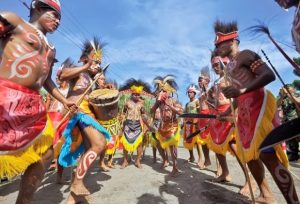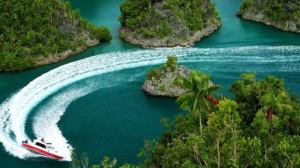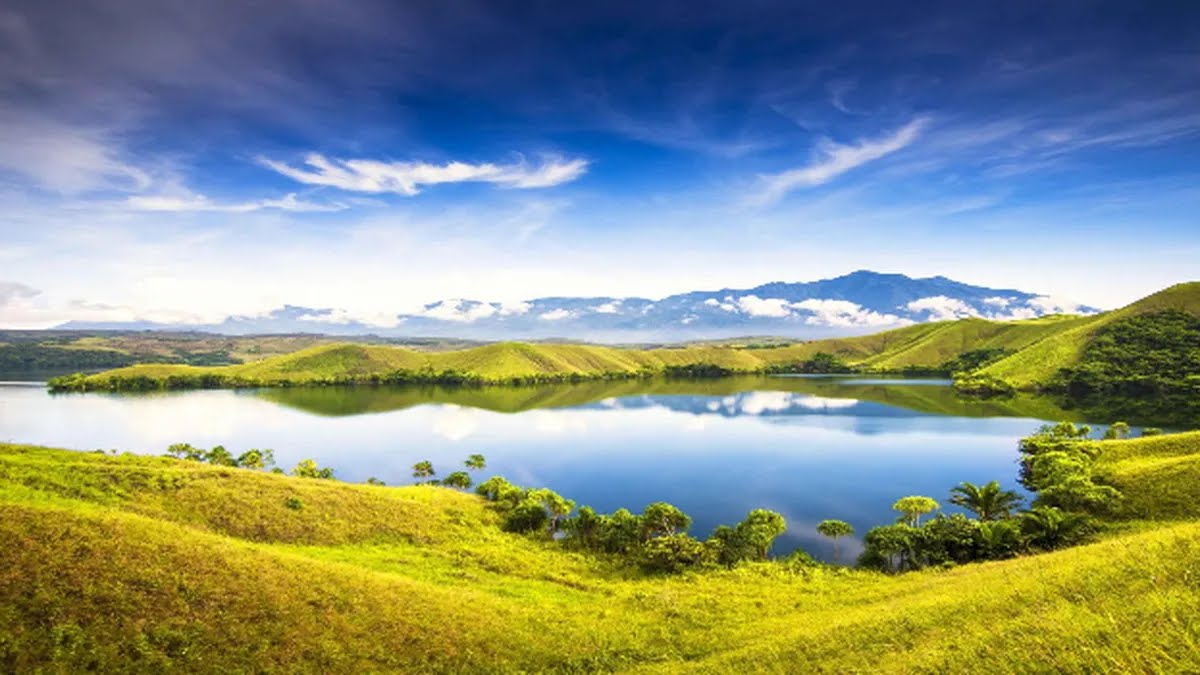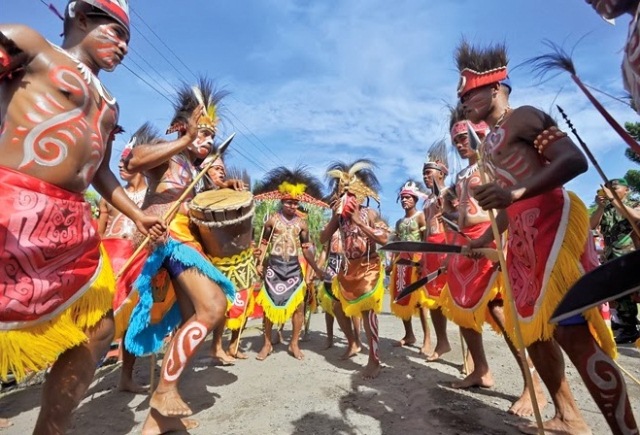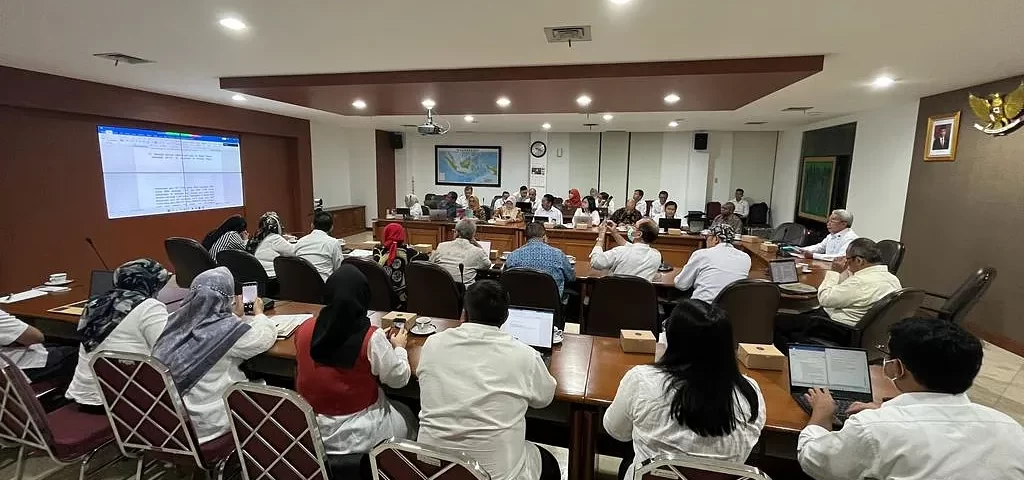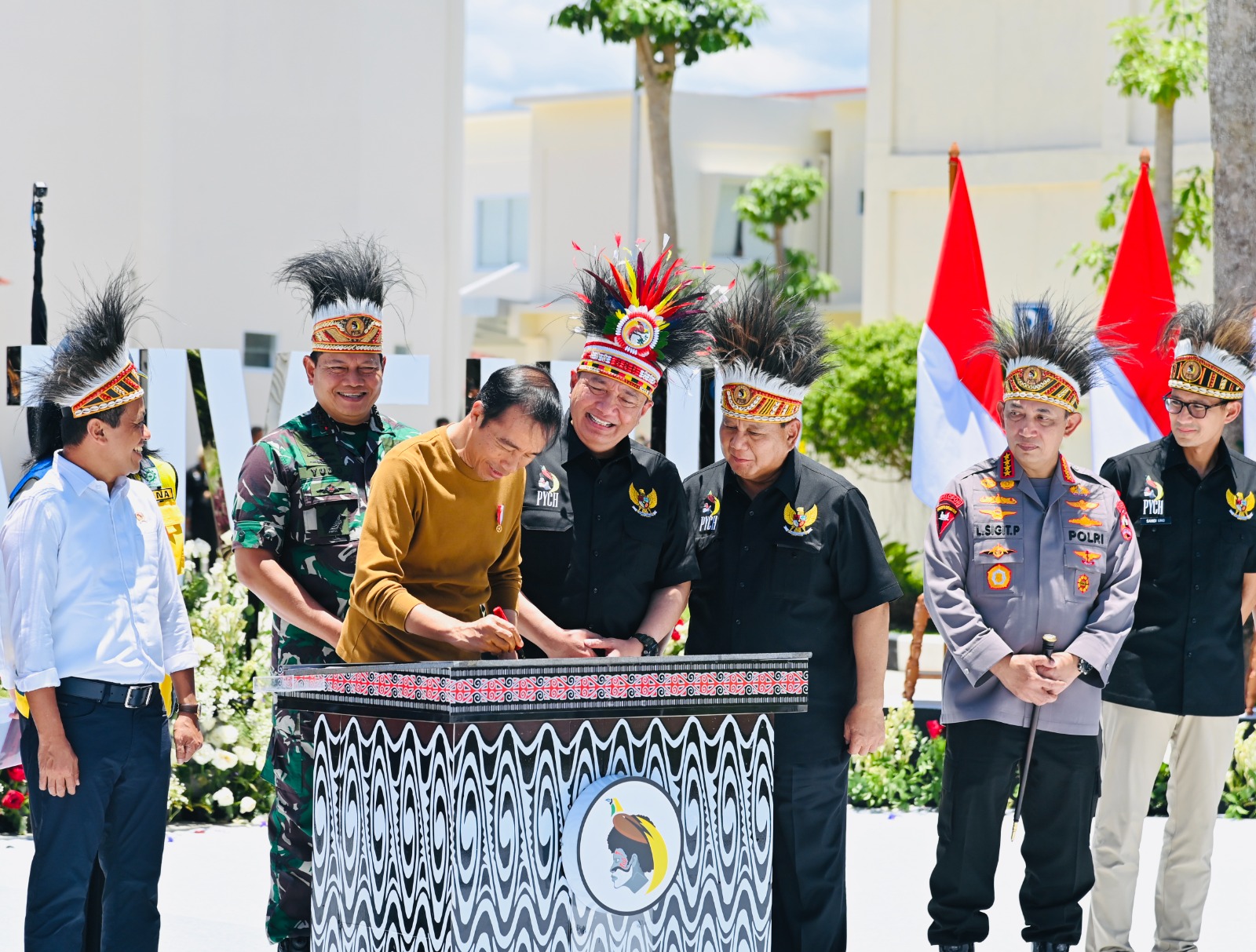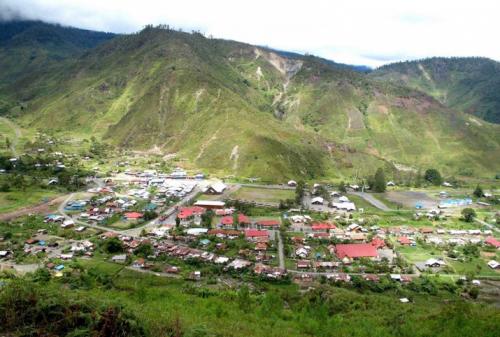
THE ECONOMY OF WEST PAPUA:
This province has tremendous potential both agricultural, mining, forest products and tourism. Pearls and seaweed are produced in Raja Ampat Regency while the only traditional weaving industry called Timor fabric is produced in South Sorong Regency. Fragrant nutmeg syrup can be obtained in Fak-Fak Regency as well as various other potentials. Besides that nature tourism is also one of the mainstays of West Papua, such as the Cenderawasih Bay National Park located in Teluk Wondama Regency. This National Park stretches from the east of the Kwatisore Peninsula to the north of Rumberpon Island with a coastline of 50O km, the land area reaches 68,200ha, sea area 1,385,300ha with details of 80,000ha of coral reefs and 12,400ha of ocean.
Language
Indonesian is the official language in the Papua Barat province, just like other provinces in Indonesia. All road signs and documents released by the provincial government are written in Indonesian. However, Papuan Malay is used as the lingua franca of the province, both as a trade language and in inter-ethnic communication. Papuan Malay is considered to be similar to Ambonese Malay and Manado Malay language and is mutually intelligible with Indonesian though it has been highly influenced by local languages. Nevertheless, its usage is currently diminishing as people that are more fluent in Standard Indonesian are increasing.
The number of local languages used by the native peoples of the Papua Barat province reaches 263 consisting of 5 Austronesian languages and 210 Papuan languages.
Regional languages in the Papua Barat province are threatened with extinction, because there are fewer and fewer users. At least 10 regional languages spread across 14 major tribes in the province are threatened with extinction, if not immediately documented and preserved. The threat of extinction is due to economic, educational and political problems. The indigenous Papuans who transact on the market will use Indonesian, because the buyers or sellers are migrants or they speak a different Papuan language. The need for children to use Indonesian daily and lack of education in schools about regional languages largely contributes to their disuse and extinction.
Transport
In the West Papua Province, the largest airport is Dominique Edward Osok Airport, located in Sorong. In addition, there are also Fakfak Airport, Rendani Airport in Manokwari and Utarom Airport in Kaimana. Major flights to the West Papua area from Jakarta, Surabaya and Makassar are usually via the airport in Sorong or Biak then continue with small aircraft.
Demographics (Ethnic Groups)
51.5% of the total population in West Papua are the native Papuan people. They are several tribes in West Papua. The tribes that inhabit West Papua Province are the Arfak, Doreri, Kuri, Simuri, Irarutu, Sebyar, Moscona, Mairasi, Kambouw, Onim, Sekar, Maibrat, Tehit, Imeko, Moi, Tipin, Maya, Biak, Bintuni, Dani, Demta, Genyem, Guai, Hattam, Jakui, Kapauku, Kiman, Mairasi, Manikion, Mapia, Merindeanim, Mimika, Moni, Muyu, Numfor, Salawati, Uhundun and Waigeo.
When viewed from cultural characteristics, livelihood and patterns of life, indigenous Papuans can be divided into two major groups, namely mountainous Papua or inland, highlands and lowland and coastal Papua. The belief pattern of traditional Papuan religions unites and absorbs all aspects of life, they have an integral worldview that is closely related to one another between material and spiritual worlds, which are secular and sacred and both function together.
The remaining population are mostly immigrants from other parts of Indonesia, such as the Javanese, Buginese, Makassarese, Minahasan, Torajan, Butonese and Moluccans.




